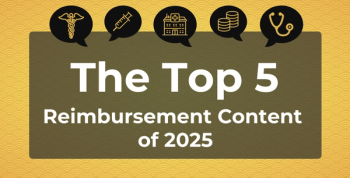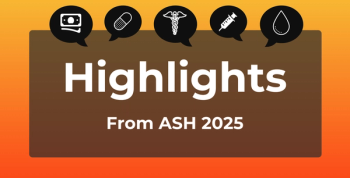
Clinical Data Predicts Risk of Progression to Proliferative Diabetic Retinopathy
Key Takeaways
- Survival models using EHR data predicted progression from NPDR or DME to PDR in type 2 diabetes patients.
- Key risk factors for progression included age, race, NPDR severity, and diabetic nephropathy.
Survival models using electronic health record data show promise in predicting progression to proliferative diabetic retinopathy in patients with type 2 diabetes.
Among a cohort of adults with type 2
This prognostic study is published in
“Overall, all models demonstrated good predictive discrimination across the 5 data cycles, with the Cox proportional hazards regression and RSF models showing superior calibration compared with the Cox LASSO [least absolute shrinkage and selection operator] regression model,” wrote the researchers of the study. “This result indicates that, while all models were similarly effective in distinguishing patients with faster vs. slower progression to PDR, the Cox proportional hazards regression and RSF [random survival forest] models were more accurate in predicting the actual time to progression.”
Diabetic eye disease is highly prevalent in the US, with diabetic retinopathy being the leading cause of blindness among working-age adults.2 Diabetes also remains the leading cause of preventable blindness nationwide.
The researchers used deidentified EHR data from the University of California Health Data Warehouse, encompassing information from over 10 million patients across multiple sites, and included adults aged 18 years or older with type 2 diabetes and a diagnosis of NPDR or DME between March 1, 2012, and July 3, 2024.1 Patients with a prior diagnosis of PDR or without adequate clinical history were excluded. The final cohort of 7739 patients was split into a development set and an external test set based on the UC Health site.
The primary outcome was the time from the index date to the first PDR diagnosis or the last in-person visit.
Among the patients included in the study, the mean (SD) age was 66.7 (11.4) years, and 53.2% were male. A total of 723 (9.3%) individuals progressed to PDR over a mean follow-up time of 1.89 (2.09) years.
The models demonstrated strong predictive performance, with Harrell concordance index values ranging from 0.73 to 0.75 across both internal and external test sets. Both the Cox proportional hazards regression and random survival forest (RSF) models showed good calibration for predicting PDR risk up to 2 years.
Additionally, key independent risk factors associated with progression included older age, race and ethnicity, the presence and severity of NPDR, DME, higher mean hemoglobin A1c levels, and diabetic nephropathy.
However, the researchers acknowledged several limitations. First, because the data only began in 2012, some patients’ diagnoses may not have reflected true incident disease if diagnosed outside the system. Second, missing data for key variables like HbA1c may have reduced statistical power. Third, class imbalance, with only 9.3% of patients who progressed to PDR, led to low positive predictive value, although weighting the minority class improved calibration without affecting overall model discrimination.
Despite these limitations, the researchers believe these findings underscore the models' ability to effectively stratify risk and support clinical decision-making for patients with type 2 diabetes and early-stage diabetic eye disease.
“By predicting the timing of progression to PDR, personalized recommendations for follow-up duration and better resource allocation can be provided for high-risk patients,” wrote the researchers. “With continued progress in data integration and predictive modeling, these survival models have the potential to facilitate earlier identification of high-risk patients and enable targeted interventions for these patients, ultimately contributing to improved outcomes.”
References
1. Kim IM, Radgoudarz N, Chen EM, et al. Time to progression to proliferative diabetic retinopathy in patients with type 2 diabetes. JAMA Netwk Open. 2025;8(7):e2521150. doi:10.1001/jamanetworkopen.2025.21150
2. Joszt L. 5 things about diabetic eye disease. AJMC®. November 29, 2024. Accessed July 14, 2025.
Newsletter
Stay ahead of policy, cost, and value—subscribe to AJMC for expert insights at the intersection of clinical care and health economics.








